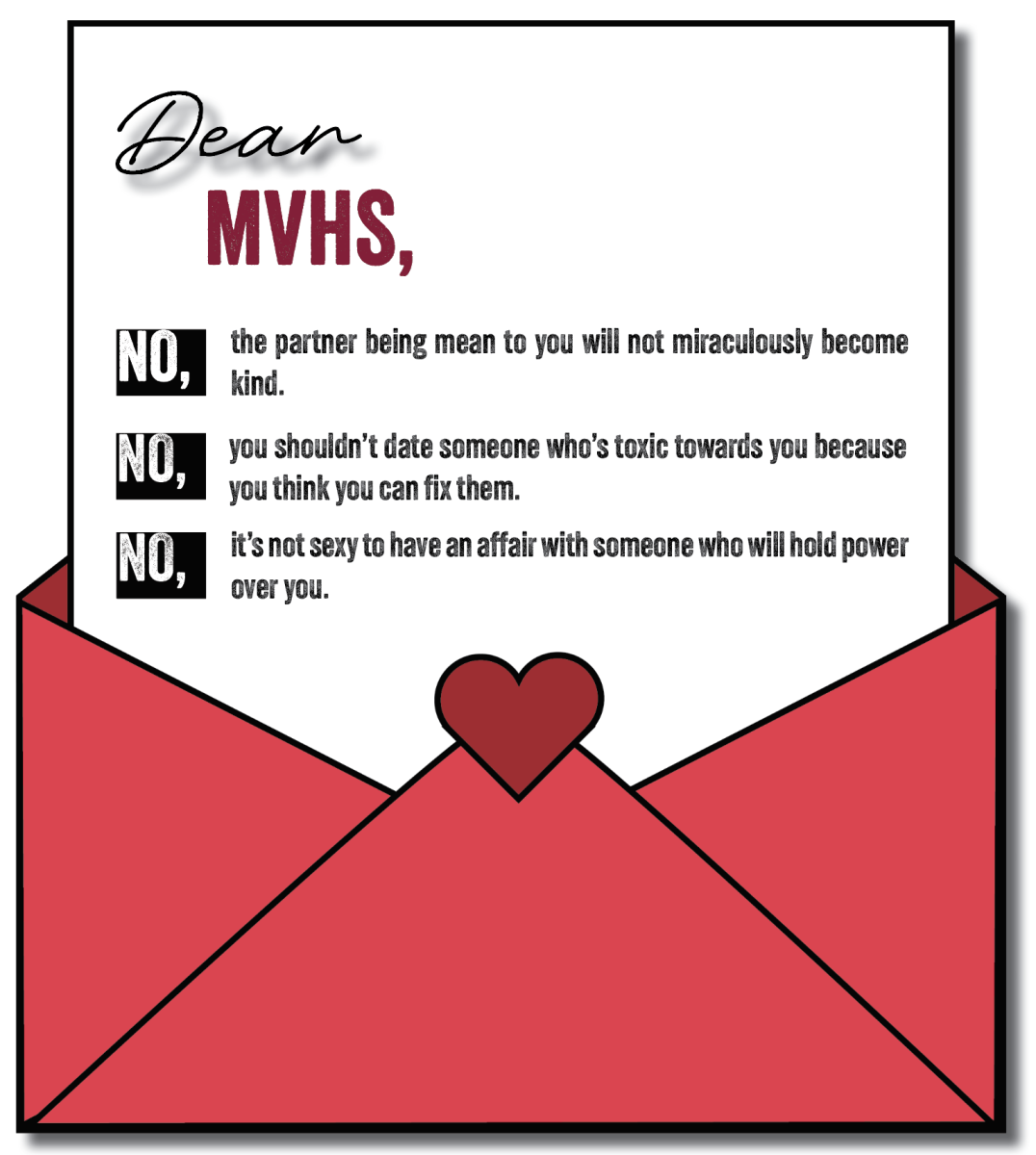With Valentine’s Day fast approaching, the classic Hallmark rom-com will make its reappearance, with all its laughable clichés and overused tropes. As these shows and movies become popular to a wider audience again, it also brings with it an array of unseen concerns regarding the media’s portrayal of relationships.
To capture the attention of an audience, many movies and TV shows will dramatize real-world problems — white lies between partners become a tedious liar-reveal plotline and divorce between parents is showcased as a shouting match to make them interesting to its viewers. Yet, in doing so, what starts as a shocking and thus effective conflict becomes a tedious and overused trope. Even worse, the media has come to normalize or even glorify certain unhealthy behaviors, ones that are much harder to differentiate from reality.
A key example lies in the media portrayal of romantic relationships. Take, for example, the character of Joyce Byers in the popular TV show “Stranger Things.” A divorced single mother, Joyce, was in a romantic relationship with two men: the first one being Bob, a mildly awkward but endearing character who is killed off within a season, and the second being Hopper, a police chief with a blunt personality. Between the two men, Joyce’s relationship with Bob is realistic and healthy. He cherishes and supports Joyce, and manages to probe and critique her sometimes hysterical behavior without belittling or insulting her. In contrast, Hopper’s personality causes him and Joyce to often clash, and their lack of communication results in countless arguments between the two. Yet the show treats Bob as a side character that’s often used for comic relief while Hopper’s unhealthy relationship with Joyce becomes a much more significant focus of the story.
Admittedly, Hopper is technically a key supporting character in the story which warrants a larger part, but the fact that his relationship with Joyce is portrayed across multiple seasons normalizes his lack of support and respect toward his partner as the character trait of someone who’s gruff and mean on the exterior but softer and kinder in the inside. His often problematic behavior is justified by the idea that he doesn’t actually mean it — that it’s all an act to hide his “real” personality. In fact, this character trope is so popular it has a name originating in Japanese media — a tsundere — meaning a character that starts out cold and harsh but gradually reveals a gentler personality.
While it may seem romantic and cute on TV to watch someone slowly open up, this isn’t naturally grounded in real life. The reality is that most people aren’t going to miraculously reveal some deep suppressed childhood trauma that explains their harsh unrelenting character. Relationships that involve that amount of animosity and conflict are, more likely than not, going to stay that way. And even if there is some reason behind their actions, that still doesn’t make it OK. Having trauma or some equivalent reason for behaving a certain way doesn’t justify being a bad partner. A show can have the character forgive and forget because they “understand” their partner, but it shouldn’t work that way in real life.
This idea of a relationship that starts rocky is also present in the popular enemies-to-lovers trope. But this trope in turn normalizes tension between characters that have antagonistic relationships as romantic tension. It romanticizes feelings and behaviors that range from hate to being actually toxic or abusive as some sort of desirable cover-up, and being able to move past this hatred stands as a testament to the love between the two. A healthy relationship should involve honesty, trust, respect and open communication. This trope has none.
Of course, it’s easy to say that we’d never be tricked by these pitfalls in real life and that we can tell the difference between fact and fiction. But it’s not always that easy, especially when you’re involved in the situation. Many abusive relationships seem happy to begin with, before becoming more controlling and possessive, yet this change is hard to see from within the relationship. Media normalization works in much the same way.
In addition, problems are often harder to identify, especially for impressionable youth, when it’s not necessarily portrayed as something outwardly strange. Take the popular K-drama “Goblin,” a show about an immortal being who finally breaks his curse of immortality after meeting his destined love. It sounds sweet and inviting, which is reflected in its popularity, but this immortal being’s supposed love is a high school senior. Not only does this call into question the thousands of years in age gap, but it also becomes a matter of legality as though in the real world. Though this age gap is indeed exaggerated, it can easily be replicated in real life by relationships between high school students and adults, leading to problematic power dynamics. Yet the age gap in the show seems unproblematic because of how charming and perfect the male lead is, which may not be true in real life. This normalization of risky behavior — just think of characters following their crushes around and documenting their every movement as a thinly veiled parallel to stalking — permeates every bit of media we consume.
Unfortunately, it’s not likely that media portrayal of relationships is going to change drastically in the coming years. Instead, it’s up to the audience to learn how to differentiate fiction from reality. That’s why media literacy is important — it’s not just about fake news — it’s about all the media we consume. Especially as students, with less life experience to guide our way, and as we consume more media than ever before, it’s our responsibility to be able to distinguish between healthy and unhealthy relationships.










